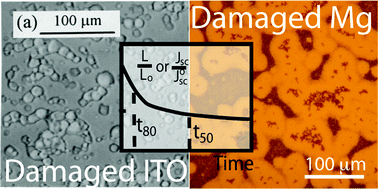After efficiency, lifetime is the second most important parameter for organic devices. Interfaces play a major role in that lifetime. This article reviews the current state of the art with regards to interfacial stability and control of electrode/active layer interfaces to understand the performance of organic optoelectronic devices. From examples relating to interfacial chemical reactions, interfacial morphological changes, and interfacial electronic level modification, a comprehensive picture of the role of the organic–electrode interfaces in device stability can be formed. The review begins with a brief overview of degradation in organic devices, including definitions and measurement approaches. It is then broken into two sections. The first focuses on the bottom contact (substrate) interface, specifically chemical reactions and dewetting, as the two main mechanisms of device degradation. The second section examines the top contact interface, which is prone to oxidation, interdiffusion, blistering and delamination, and inhomogeneous loss of performance (dark spots). For both sections, various approaches to overcoming device instabilities are given, with special attention to the various interlayers that have been introduced into devices for improved stability. Each section also includes examples where the main degradation mechanism is used advantageously to produce novel device architectures and surprising solutions to device degradation.

You have access to this article
 Please wait while we load your content...
Something went wrong. Try again?
Please wait while we load your content...
Something went wrong. Try again?


 Please wait while we load your content...
Please wait while we load your content...